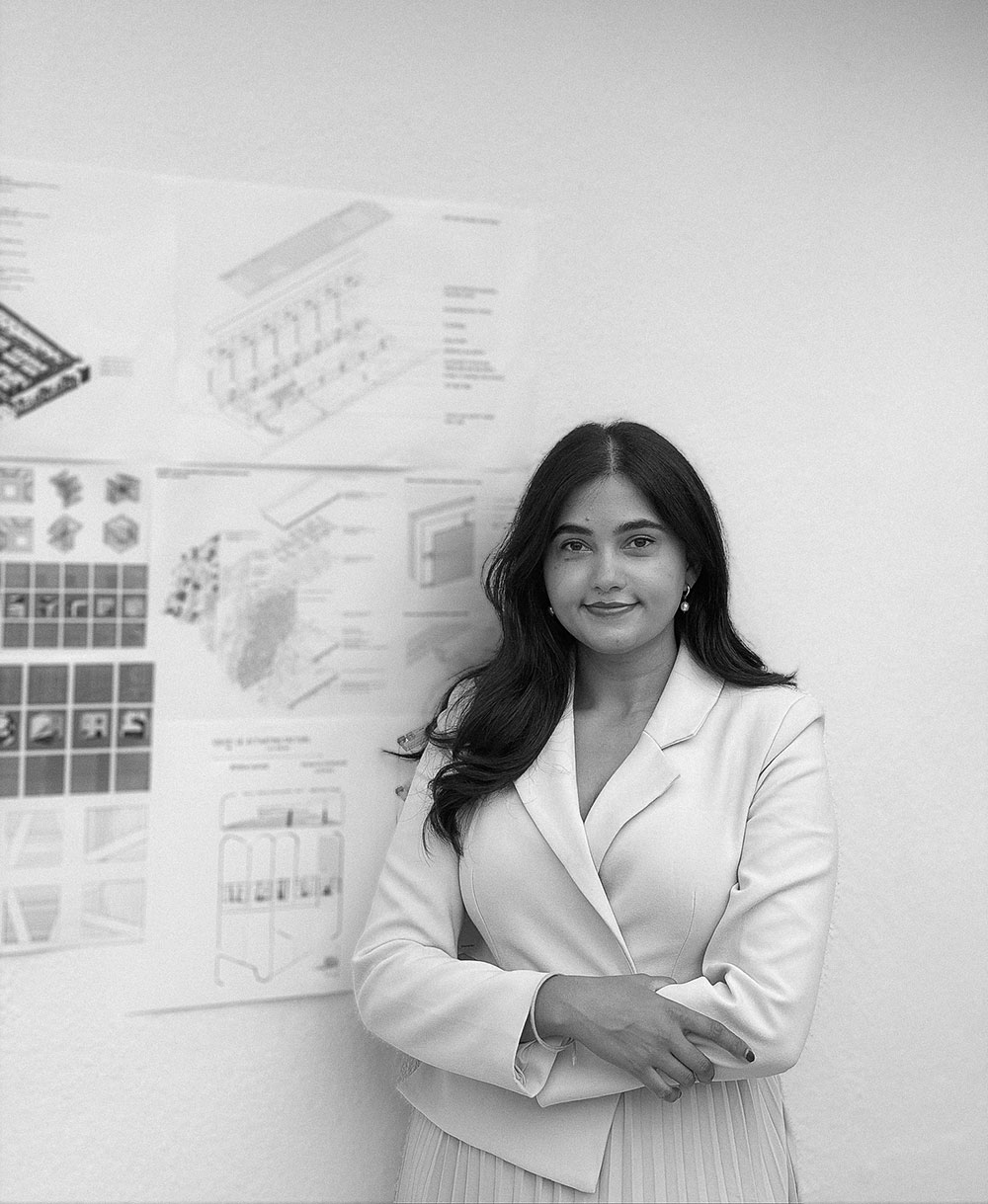In contemporary architectural discourse, a persistent tension exists between the spectacle and the servant. One path leads to the landmark—the photogenic, skyline-defining icon. The other, often quieter and less celebrated, leads to the considered space—the classroom that fosters curiosity, the laboratory that enables discovery, the community center that cultivates belonging. It is within this second tradition that the work of architectural designer Sanjana Satya Prakash finds its footing. Her career, which has traced a path from the vibrant communities of India to the technical hubs of Boston and the diverse landscapes of Los Angeles, is a consistent and compelling study in the belief that the ultimate measure of a design’s success is its utility to human life.
A signature aesthetic or a formalistic flourish does not define Sanjana Satya Prakash’s talent. Instead, it manifests as a synthesis of distinct, yet interconnected, capabilities: a deeply ingrained philosophy of purpose, a nuanced understanding of cultural and environmental context, an unwavering commitment to collaborative process, and a formidable technical acumen that bridges vision and reality. Her personal and professional ethos, encapsulated in the simple phrase, “Design shapes with purpose,” serves as more than a tagline; it is the operational framework through which she approaches every challenge, from a low-cost playground built of recycled tires to a multi-million-dollar performing arts center. To understand her work is to understand an approach to architecture that is less about making a statement and more about making a difference.
The Foundations of Purpose: From Playground to Principle
Every design philosophy has an origin story, a moment where abstract ideas are forged into concrete convictions. For Sanjana Satya Prakash, that moment can be traced to a public schoolyard in Bengaluru, India. Long before her involvement in large-scale institutional projects, she co-founded Project Replay, a grassroots initiative with a modest goal and profound implications. The task was to design and build a playground for a public school with minimal resources. The solution was a masterclass in ingenuity and purpose-driven design.
Using discarded materials such as tires, ropes, and salvaged wood, Prakash and her peers transformed a barren plot of land into a dynamic, safe, and stimulating play space. The project, later featured in The Times of India, was significant not merely for its sustainable methodology but for what it revealed about the nature of value in design. It demonstrated, with tangible clarity, that a design’s impact is not contingent on a lavish budget or exotic materials. Rather, its true worth is measured by its direct and positive effect on its users. The joy and developmental benefits the playground provided to the children were entirely disconnected from the monetary cost of its components.
This experience became the bedrock of her guiding principle. It taught a fundamental lesson in resourcefulness, proving that sustainability is not just an abstract certification but a practical mindset of efficiency and creativity. More importantly, it established a direct link between design and social utility. The playground served a clear purpose: to nurture childhood development, creativity, and connection. This early, hands-on work instilled in Sanjana Satya Prakash a deep-seated understanding that architecture, at its most effective, is a problem-solving discipline. The architect’s primary role is to identify a human need and marshal their creative and technical skills to address it. This foundational perspective continues to inform her approach, providing a filter through which she evaluates every design decision, ensuring it remains tethered to a clear and meaningful objective.
A Global Sensibility: The Power of Context
Prakash’s professional journey has been geographically diverse, and this exposure has been instrumental in shaping her versatile and context-sensitive design talent. Having worked in India, Boston, and Los Angeles, she has developed a nuanced understanding that effective design cannot exist in a vacuum. It must be a direct response to the specific cultural, climatic, and social conditions of its location.
Her upbringing and early work in India provided a deep appreciation for an architecture that is inherently connected to community and climate. Indian design often emphasizes transitional spaces—verandas, courtyards, and loggias—that mediate between interior and exterior, fostering both passive cooling and social interaction. This context provided an intuitive understanding of human-scaled design and the sensory experience of a building.
Her time in Boston, working at DiMella Shaffer, offered a different set of lessons. There, she was immersed in a dense urban fabric where historical preservation meets cutting-edge innovation. Contributing to adaptive reuse projects required a sensitivity to the embodied energy and cultural legacy of existing structures. Her work on technically demanding science and technology projects, such as the Life Science Center, honed her skills in precision, systems integration, and interdisciplinary collaboration. This environment underscored the importance of rigorous technical execution in achieving architectural clarity.
In Los Angeles, working at Parallax Associates, she has engaged with yet another distinct context. The city’s sprawling geography, diverse population, and emphasis on the connection between indoor and outdoor living demand a different architectural response. Designing educational facilities like the Mirman School and the Sierra Canyon School’s Center for the Arts in this environment requires a focus on flexibility, natural light, and spaces that support a creative, project-based pedagogy.
This international experience has cultivated one of Sanjana Satya Prakash’s most significant talents: her adaptability. She does not impose a predetermined style onto a project. Instead, her process begins with listening and observation. She has learned that the definition of a “good” space is not universal; it is contingent on the people who will use it and the place it will occupy. This ability to synthesize lessons from disparate environments allows her to approach each new
project with a fresh perspective, free from stylistic dogma and grounded in a deep respect for local context.
The Collaborative Method: Architecture as a Team Sport
A recurring theme in Sanjana Satya Prakash’s professional history is her emphasis on collaboration. She views architecture not as the product of a solitary genius but as a collective endeavor requiring the integrated expertise of architects, engineers, contractors, and, most critically, clients and end users. Her talent in this domain lies in her ability to facilitate communication, foster mutual respect, and align diverse teams toward a shared vision.
This collaborative ethic is evident in her current role, where she manages the complex coordination for the Sierra Canyon School’s Center for the Arts. A project of this nature is a symphony of specialized systems—acoustics, theatrical lighting, structural engineering, mechanical services—that must be perfectly integrated. Sanjana Satya Prakash’s role is that of a conductor, leading communication between the architectural team, consultants, and contractors. This involves meticulous oversight of BIM (Building Information Modeling) integration, the diligent tracking of RFIs (Requests for Information) and submittals, and the leadership of OAC (Owner-Architect-Contractor) meetings.
Her proficiency in this area stems from an understanding that successful project delivery depends on clear and transparent systems. Her parallel pursuit of an Executive Master’s in Information Technology and Project Management further underscores her commitment to mastering the operational side of architecture. She recognizes that the most elegant design concept is meaningless if it cannot be executed efficiently, on schedule, and in alignment with the design intent.
This talent for collaboration extends beyond the professional team to the community. Her work with Habitat for Humanity, where she has helped build affordable housing, provided firsthand experience in working alongside future homeowners. This deepened her belief that architecture is also an act of service and that the most meaningful solutions emerge from a process that honors the voices and needs of the people who will ultimately inhabit the spaces. Her approach is characterized by an absence of ego, replaced by a focus on the collective goal. It is this ability to function as both a skilled designer and a strategic integrator of people and information that elevates her effectiveness.
Technical Acumen: The Art of Execution
While her philosophy is humanistic, its execution is grounded in robust technical skill. Sanjana Satya Prakash possesses the ability to translate abstract goals into the precise, coordinated documentation required to construct a complex building. Her work on a Life Science Center at DiMella Shaffer exemplifies this. Designing such a facility requires an intricate understanding of how to integrate specialized equipment, sensitive environmental controls, and stringent life safety systems within an architectural framework.
Her role involved the detailed development of Revit models to produce coordinated drawing sets. She designed equipment layouts and service zones, ensuring the seamless integration of architectural, MEP (Mechanical, Electrical, and Plumbing), and structural systems. This is not merely drafting; it is three-dimensional problem-solving. It requires spatial intelligence to anticipate conflicts, optimize pathways, and ensure the final built environment is not only functional but also organized, safe, and conducive to the high-stakes work of scientific research.
This technical rigor is not separate from her human-centered philosophy; it is the very mechanism by which that philosophy is realized. A commitment to creating an optimal learning environment for students is an abstract goal. That goal becomes a reality through the careful calculation of natural daylighting and the seamless integration of technology infrastructure. A desire to create a collaborative laboratory environment is achieved through the meticulous spatial organization of benches and support zones. Prakash’s talent lies in her ability to operate at both the macro and micro scales—to hold the overarching purpose of a project in mind while simultaneously resolving the complex technical details that will bring it to life.
In conclusion, Sanjana Satya Prakash’s talent is sober, methodical, and deeply considered. It is a quiet competence that finds its expression not in loud architectural gestures, but in the seamless functionality and calm dignity of the spaces she helps create. It is a talent built on the conviction that a building’s ultimate purpose is to serve its inhabitants, a perspective honed through diverse global experiences. It is a talent that thrives on collaboration and is fortified by a rigorous technical foundation. In an industry often captivated by the next spectacular form, her work stands as a testament to a different, more enduring kind of excellence—the patient, purposeful, and profoundly human act of shaping a better world, one thoughtful space at a time.






